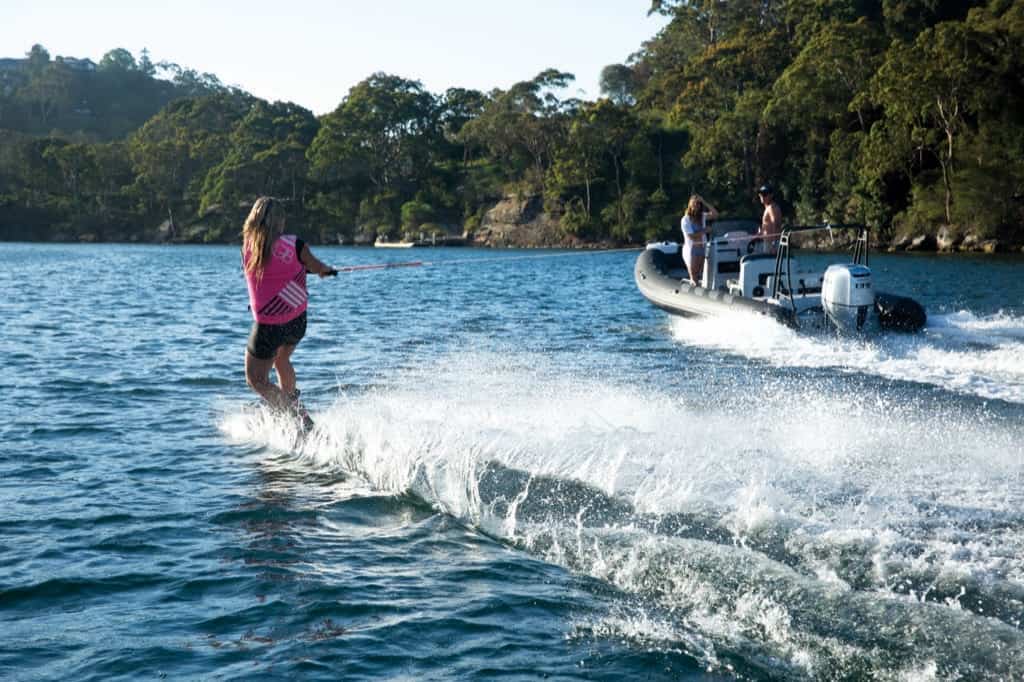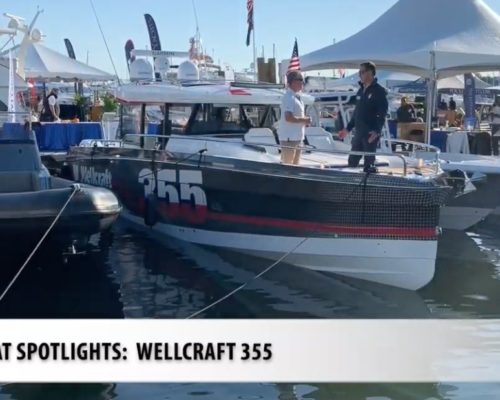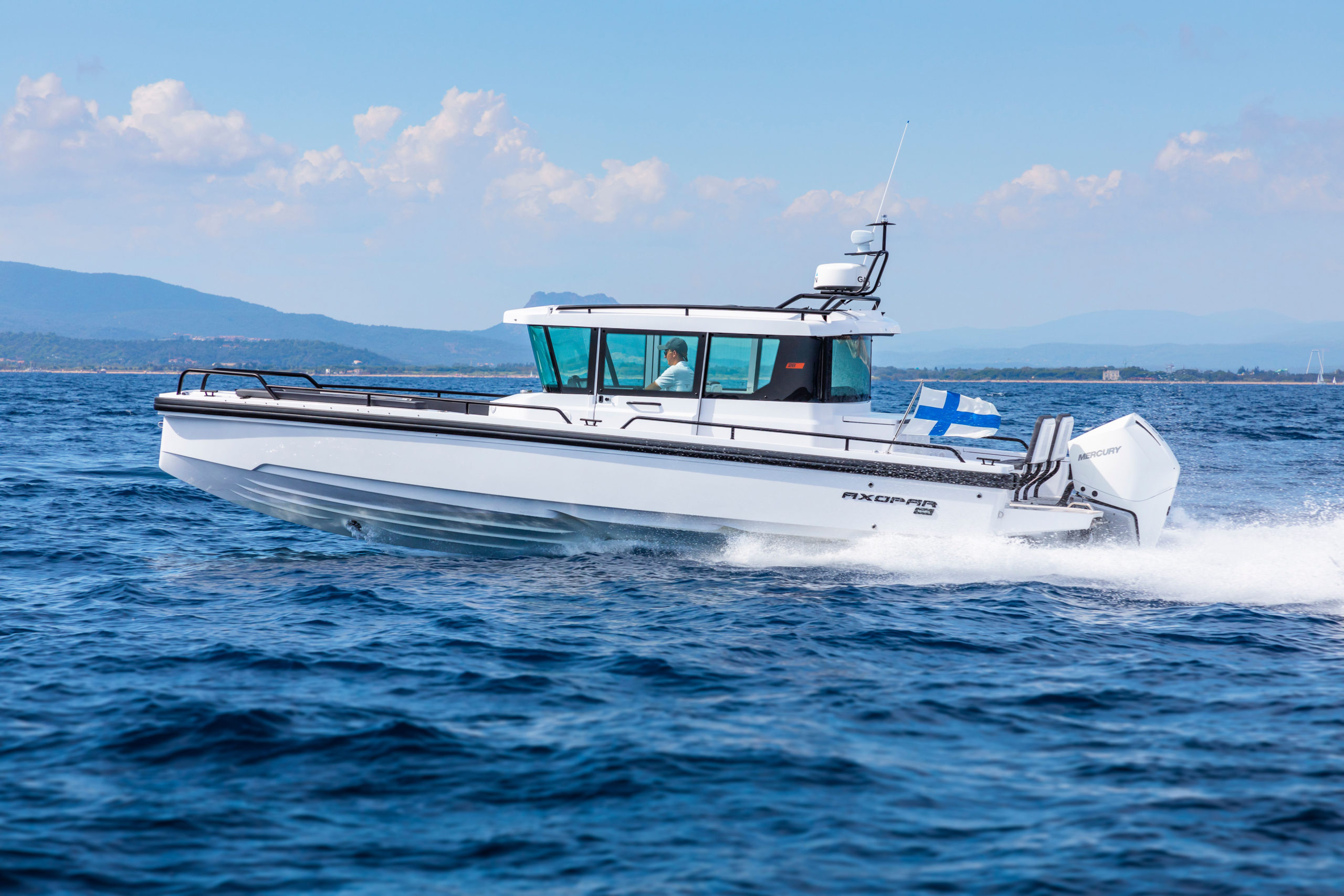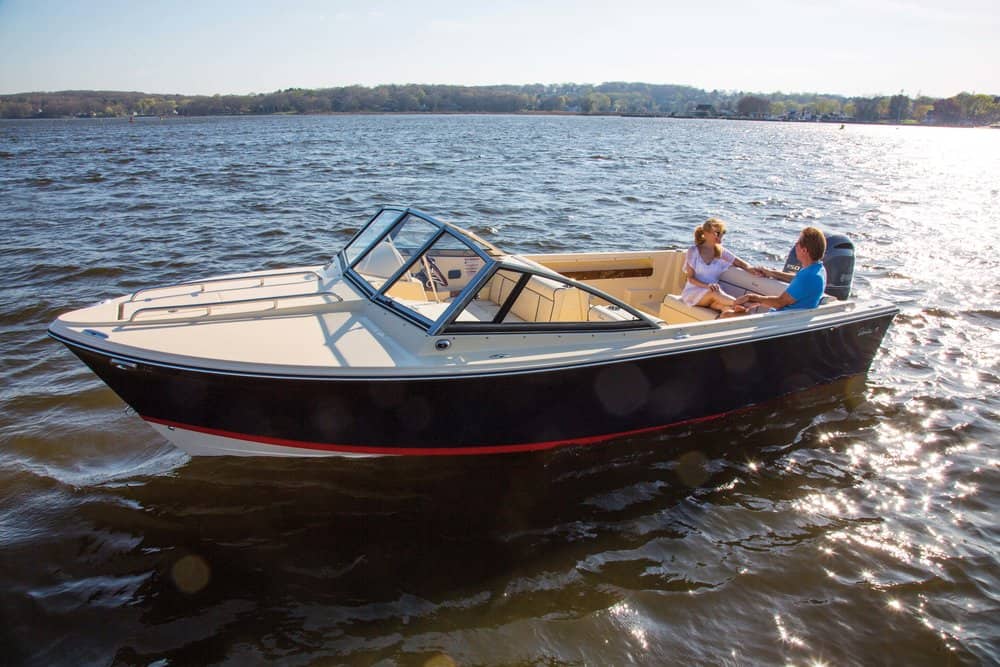A multifunctional RIB, sized for the Chesapeake Bay
Visit any launch ramp on a European harbor on a pretty day and you will find many rigid inflatable boats (RIBs) between five and and 7.5 meters long (16.5-25 feet) like BRIG’s Navigator 610. Do these folks know something that we don’t here on the Chesapeake where boats that size are hard-sided fiberglass? Well yes, most of us here think of RIBs as small tenders rather than full-sized family boats. We’re aware that law enforcement, towing, and rescue agencies use them widely because their tubes make good built-in fenders for coming alongside, though it’s not widely understood that a more important reason is that RIBs are highly capable sea boats. The other thing is— RIBs are light for their length and perform well with modest horsepower while requiring only mid-sized tow vehicles. In places where gasoline sells by the liter for nearly the price of a U.S. gallon, efficiency counts even more. Their high carrying-capacity and seaworthiness complement that efficiency.
BRIG Navigator 610
LOA: 20′
Beam: 7′ 7″
Draft: 10″
Transom Deadrise: 23°
Weight: 1,250 lbs.
Max HP: 150
Fuel Capacity: 32 gal
Available through Sirocco Marine
So why don’t more families on the Bay run RIBs? One big issue has been expense. Many larger RIBs are custom built because the builders focus on commercial and agency buyers. The other is ignorance of the technology that goes into the tubes, and the ability of builders and dealers to modify, repair, and even replace the tubes. The truth is that Hypalon tubes are tough as nails, and they provide tremendous buoyancy, and sophisticated adhesives allow capable shops to adapt the boats for a variety of uses.
The Navigator 610 has big, one-foot, eight-inch diameter tubes, which enabled the designer to specify a deep-V center hull for wave-cleaving, while the tubes absorb shock and damp spray as it comes down on a sea at speed. The result can be a softer ride than a conventional rigid hull provides. A transom deadrise as sharp as this Navigator’s 23 degrees would result in a tippy conventional hull, but in this case, the aft ends of the tubes just kiss the water at rest and provide stability. They also assist the hull in climbing onto plane at low speeds.
In contrast to custom builders of institutional-grade RIBs, the BRIG brand brings reasonable prices to the boat market. The company has an interesting story. It was formed in the 1990s after the collapse of the Soviet Union in a high-tech Ukrainian university town by a group of aeronautical engineers seeking to develop a new line of work. An understanding of fluid dynamics transfers well to water, and the company took off. Today, BRIG is the largest-selling brand of RIB in Europe and Australia. In the U.S., the importer is Sirocco Marine, based in Florida but with a strong dealership in Annapolis.
So, what can the 20-foot Navigator 610 offer to a water-loving family or a Chesapeake angler? First off is a comfortable ride in our Bay’s often-choppy seas. Our test boat, rigged with a 90-hp Honda, handled the chop and powerboat wakes smoothly, with no spray reaching the windshield. Any water that comes aboard drains right out of the self-bailing cockpit. At that length, it bridged the crests of a typical short Chesapeake chop more easily than a shorter hull, though it is comparable in other respects like weight, power requirements, and price. The boat is rated for 150 horsepower, but the 90-hp is plenty for most uses, with good acceleration, outstanding fuel efficiency at 17- to 20-knots offering 6.9 nautical miles per gallon at 17.2 knots and a range of 198 nautical miles at 90-percent fuel capacity and the engine loafing along at 3,500- rpm, and a top speed of 33.5 knots at 5,800 rpm. For a little more top speed without adding weight, ask Sirocco Marine for a Honda 100, which is based on the same engine family.
The knock on RIBs is that the tubes take up more space than the hull sides on a conventional fiberglass rig. We measured the 610’s interior. Its console is 30 inches wide, about standard for skiffs of this size, with an upholstered two-person seat with a cooler in front. The console has plenty of flat space for flush-mounting electronics (Sirocco rigs primarily with Simrad units) and adding features like glove boxes and tackle storage. Hydraulic steering is standard. The cushioned bow seat holds an anchor locker, and there’s a roller on the square bow with a jam cleat for the rode. The tube effectively offers a seat back for anyone sitting there, facing aft. The cushioned SeaDek nonskid between the two seats offers good footing. The console is set to the starboard side to provide comfortable fore and aft passage to port, but we found it easy to move from bow to stern on the starboard side as well by grasping the sturdy console rail and stepping onto the tube, which has non-skid pads in strategic spots.
The 30-inch helm seat offers flip-down bolsters, with a SeaDek footrest and storage in the seat box. Aft of the seat is more SeaDek for sure footing and a 40-inch seat in front of the transom supplies more storage and battery, power switch, and bilge access. The transom area features a stainless-steel double-arch for the stern light, a towing eye, and attachment points for other accessories such as rod holders. Abundant handholds make it easy for swimmers to grab hold and slide over the tubes to come aboard.
One advantage of buying from a RIB expert like Sirocco Marine is maintenance support. These boats are durable, but as with fiberglass, there are simple procedures to keep them in good shape for years. It is important to keep the boat clean with a quick freshwater washdown and scrub after a day on the water. Keep the boat covered as much as possible. Once a month, apply a water-based protectant to protect the tubing material. It’s like sunblock for the tubes, helping protect from long-term UV exposure. Base price for BRIG’s Navigator 610 with a Honda 90 is $44,900.




